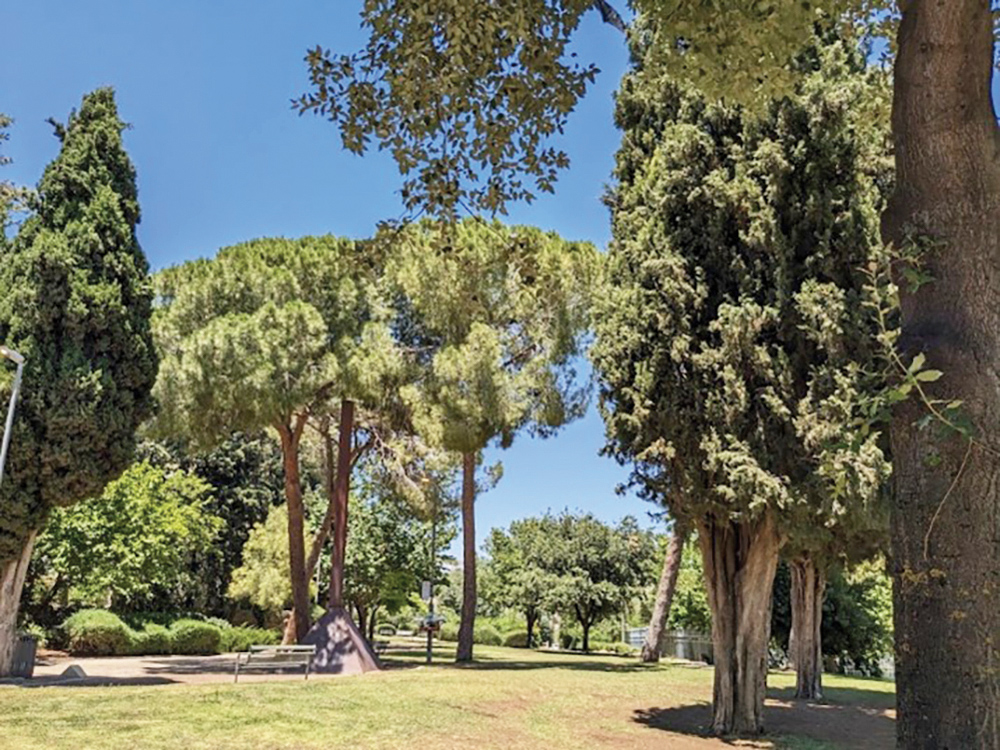A reader asked me: “I see on the Jerusalem maps that Gonen is extremely well located, so why have I never heard of this community?” The answer is that, despite the government’s new “Israeli” name, everyone still refers to the Jerusalem neighborhood by its original name: Katamon.

Katamon is located in southern Jerusalem, and is bounded by Talbieh to the northeast, and the German Colony and the Greek Colony to the southeast. The name Katamon is Greek meaning “below the monastery,” referring to the nearby San Simon monastery which is surrounded by an enormous beautiful public park. Katamon actually branches out into nine neighborhoods, collectively called Katamonim (or officially: Gonenim), with the oldest and most prime neighborhood called Old Katamon.
Katamon was established just before World War I, and became a ghost town at the beginning of the 1948 War of Independence after the Christian Arabs fled. Within a few weeks, it was converted to housing for Jews evacuated from the Old City, and for many waves of new immigrants, primarily the throngs of Jews who were expelled from middle eastern countries after 1948.
During the War of Independence, the Palmach heroically battled to retain control of Katamon and southern Jerusalem. A memorial is located in the large San Simon Park, bordering the San Simon monastery where a number of fierce battles took place. Today, the scenic park is the Central Park of the neighborhood, and hundreds of locals meet and greet at San Simon Park every Shabbat afternoon.
Prior to the 1967 Six Day War, the Katamonim were located along the Israeli—Jordanian armistice line and had to defend itself against Jordanian sniper fire, hence the name Gonenim, which means ‘Defenders.’ After the Six Day War, the government embarked on a massive urban renewal project in which the neighborhood’s infrastructure and housing stock, much of which was housing projects built to accommodate the large influx of new immigrants, were improved.

Today, a number of new undertakings have been launched to upgrade the community’s infrastructure—such as adding a light rail line—and housing stock. The housing projects include a mix of traditional new construction plus urban renewal projects, including TAMA-38 and Pinuy Binuy. Some of these projects have already been completed while others are in various stages of the development process.
With its many tree-lined streets and lovely parks, Katamon is a haven for religious families due to its many community centers and educational institutions, and because the cost of housing used to be significantly lower than neighboring communities, such as Talbieh, the German Colony and Rechavia. Families continue to move in, but housing prices in Old Katamon are now similar to the more established neighborhoods. In comparison, pricing in Katamonim varies greatly, based on location and proximity to Old Katamon.
Katamon has dozens of shuls, including many with large English-speaking crowds, such as the Shimon Hatzadik Synagogue, a/ka the Young Israel of San Simon. In addition, the neighborhood is home to a number of post-high school overseas programs, such as Matan, Nishmat, and Midreshet Torah V’Avodah. Katamon has local supermarkets, cafes and retailers, is a 15-minute stroll from Emek Refaim, and a half hour away from the Old City and the City Center.
It is no wonder that many English speakers have moved to Katamon, and many more are interested in joining, as they have found the welcoming community to be a very comfortable fit.
Gedaliah Borvick is the founder of My Israel Home (www.myisraelhome.com), a real estate agency focused on helping people from abroad buy and sell homes in Israel. To sign up for his monthly market updates, contact him at gborvick@gmail.com









